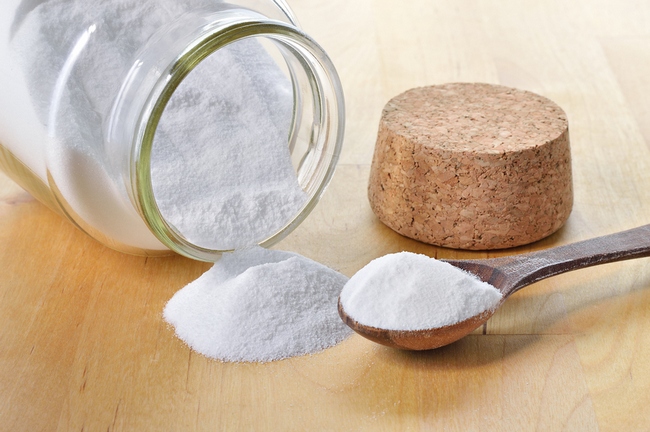- Make It Yourself Lavender Heart-Shaped Bath Bombs!
- 20 Things You Never Knew About “Down There”
- 12 Best Foods For Those Suffering From Arthritis Pain
- 12 Personal Hygiene Mistakes Almost Everyone Makes (Mom Never Told You About #4!)
- 15 Medicinal Plants And Herbs From The Cherokee People
- 12 Mind-Blowing Benefits Of Drinking Coconut Water During Pregnancy
- 12 Outstanding Winter Foods That Won’t Fatten You Up Like A Christmas Turkey
Therapeutic Baths That Could Change Your Life

Photo credit: bigstock
If you have been feeling a bit under the weather, not so much sick as just in need of a little TLC, or if you feel like you need a little boost, then a healing soak in a tub is just what the doctor ordered. Therapeutic baths can help reset your equilibrium, calm the mind, and help you remove toxins, all with no effort at all! Therapeutic baths help you to relax while gently balancing your system.
If you have ever checked out any health spa menu then you know that there is a mind staggering amount of different types of soaks available. From anti-aging to weight loss to detoxification, the available variety is amazing. However, for most people, enjoying a soak at a health spa is a treat for special occasions and not something you can do on a regular basis as they tend to be quite expensive.
The good news here is that you can make your own restorative bath at home! Literally, for pennies, you can detoxify the body, alleviate health problems, relieve stress and ease muscle tension. It’s much easier than you think and it’s as close as your own private bathtub.
Try to take two or three baths per week to help eliminate health issues and/or to lower stress levels.
Always remember to neutralize the chlorine in your tub water by adding about two teaspoons of vitamin C to the water and mix well. If you live in an area where they add fluoride to the water and you don’t have a whole house filter, add about 3 tablespoon of Borax to the water to help eliminate the fluoride.
Keep reading on how you can recreate a healing spa therapeutic bath in your own home.
1. Seaweed Treatment
Seaweed is super rich in minerals and support hormonal balance. It also supports the proper function of thyroid and adrenal glands. Seaweed is a truly excellent ingredient for a therapeutic bath but don’t run to the nearest beach and pick up some seaweed off the shore, just go to your local health food store and pick up some dried kelp or dulse seaweed. Add about 4 ounces of dried seaweed to a large sized tea ball and place in a pot with about 8 cups of boiling water. Cover and simmer for about 30 minutes, then remove from the heat and pour everything, including the tea ball, into your tub. Add additional hot water and soak until the film from the seaweed completely dissolves off your skin. Heavenly!
2. Clay Treatment
Clay is fantastic for gently pulling heavy metals from your body; it’s one of the best detoxifying agents you can find. Fill your tub about halfway with very hot water and then sprinkle about 5 pounds of Pascalite, Inland Sea, Redmond, or green desert calcium bentonite clay into the water. Allow to sit for about 15 minutes, and then add enough water so the temperature is comfortable for you. Be sure you have enough water so that you can submerge up to your neck. For beginners, soak for about 15 minutes. Add about 5 or 10 minutes of soaking time to each bath after the first one until you feel comfortable soaking for about 2 hours. Don’t worry, clay won’t clog your drain or hurt your plumbing.
Continue to Page 2

Photo credit: bigstock
3. Baking Soda Treatment
Sodium bicarbonate, AKA baking soda, is also an inexpensive, popular choice that can be used alone, or added to either clay or seaweed baths. Dissolve about 4 cups of baking soda into hot water. Baking soda buffers the effects of radiation and will leave your skin remarkably softer. Read more about baking soda uses.
4. Sea Salt Treatment
Sea salt is great for grounding and detoxifying the body. Sea salt can also be added to clay or baking soda baths. Himalayan pink salt or Celtic salt are two fantastic choices for baths. Use about 2 cups per bath and agitate the water so the salt doesn’t just settle on the bottom of the tub.
SEE ALSO: Health Benefits of the Top 6 Holiday Herbs
5. Epsom Salt Treatment
If you have sore muscles, this is the soak for you! Magnesium sulfate (Epsom salt) is super detoxifying and eases sore muscles and joint pain. Add about 3 cups of Epsom salt to an average sized bath tub and soak for a minimum of 20 minutes.
Tip:
If you want to do a little self-massage, there is no better place than a hot bath. After you have soaked and loosened up your muscles for about 15 minutes, take a ball (most people use a tennis ball) and trap it between your back and the back of the tub, or between your leg and the bottom of the tub, and roll the ball back and forth over your muscles. Your buoyancy in the water allows you complete control over the pressure point of the ball. Apply a bit more or a bit less pressure is as easy as submerging yourself a bit more or rising out of the water a bit.
Remember not to make your bath crazy hot. Hot, therapeutic baths are supposed to be soothing and peaceful, not burning and painful! Make the water comfortably hot, but don’t allow yourself to get burned. Be sure you drink plenty of water before and after your bath so you don’t become dehydrated (find out main reasons of dehydration). This is one of the main reasons people avoid baths; they become dehydrated, get headaches afterwards, and feel grumpy. All of those symptoms are signs that you are dehydrated. You might even want to consider keeping a bottle of ice cold water next to the bath and taking a swig every 5 minutes or so to be sure you don’t become dehydrated.
Also, don’t take a hot bath just before bed. The hot water rev’s up your system at first and it takes a few hours before you will cool down and really feel relaxed. Be sure you have plenty of time to cool down completely before you head off to bed.
Sources:
































